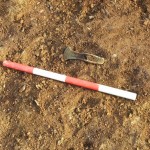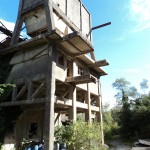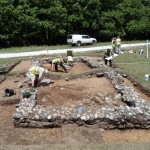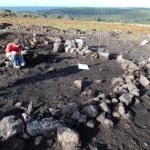After two years the archaeological investigations being undertaken on the site of the tungsten mine at Hemerdon are winding up. This work, funded by the developer – Wolf Minerals Ltd, undertaken during the long wet summer of 2012 and the blistering heat of 2013 has involved the recording of the historic mine buildings, excavation of prehistoric cairns and a detailed investigation of the tin works that will be affected by the tungsten mining activity. The archaeological investigations have shown that the landscape to the north of the mine was utilised in the Bronze Age as a funerary landscape, with stone cairns constructed in prominent positions. The cairns were constructed of local stone and many of the cairns were edged, or kerbed, with larger boulders. The whiteness of the stone used meant that they would have been very visible in the landscape.
The investigation of the medieval and post-medieval tin works, the most comprehensive ever undertaken, has yielded important information on how the ground was worked to expose and access the ore, with tin-streaming and mining both taking place, at different times, on the site. Another first was the excavation of a tinners’ hut.
Finds from the site have included a Bronze palstave, a prehistoric stone quern – used for making flour – and a decorative faience bead.
Once the fieldwork has been completed a comprehensive programme of specialist analysis will be undertaken on the results of the fieldwork and will ultimately be presented in a detailed, illustrated, report.
The archaeological works were carried out by AC Archaeology and Groundwork Archaeology.



